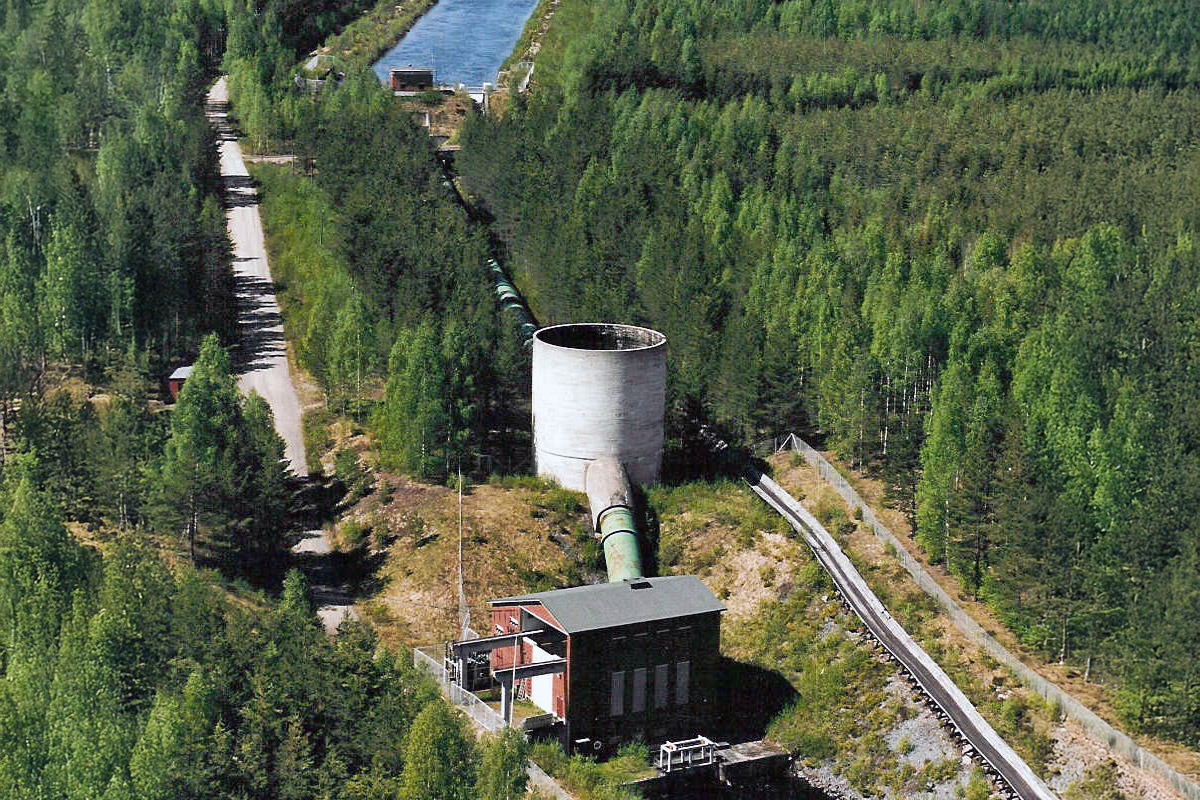Hilmo
Facts

The Hilmo power plant building stands by the Hilmonkoski rapids, about two kilometres south of Lake Kivijärvi, which is the only regulated lake in the system. Water from the lake flows along a 1.6-kilometre-long dug canal and finally through a pipeline fitted with a swelling tower to the Hilmo power plant. After the power plant, the water flows through another 0.5-kilometre canal to Lake Vuosjärvi, located further south.
The design discharge at Hilmo is small compared to the lake’s regulation volume, so the lake's water level typically varies by only a few centimetres over 24 hours.
Water can be spilled from Lake Kivijärvi via the Potmo dam, which is located around ten kilometres from the power plant. The dam has a fish ladder to help fish migrate through the rapids. Each year, a number of brown trout smolts are released into the water system to maintain the area’s good fishing opportunities.
Hydro power in Finland
Large-scale hydro power plant construction took place after the Second World War, when the country's reconstruction and the paper and pulp industry required a great deal of energy.
The largest hydro power stations are located in the rivers of northern and north-eastern Finland. Around half of the watercourses have been modified for electricity generation. Unregulated rapids are protected, so extra capacity can be obtained by increasing the efficiency of old power stations or creating artificial lakes.

